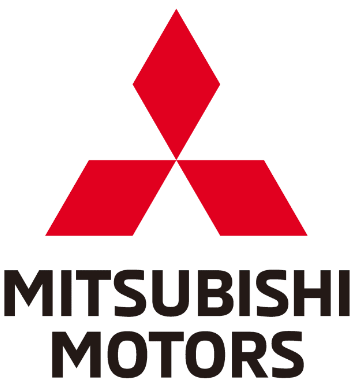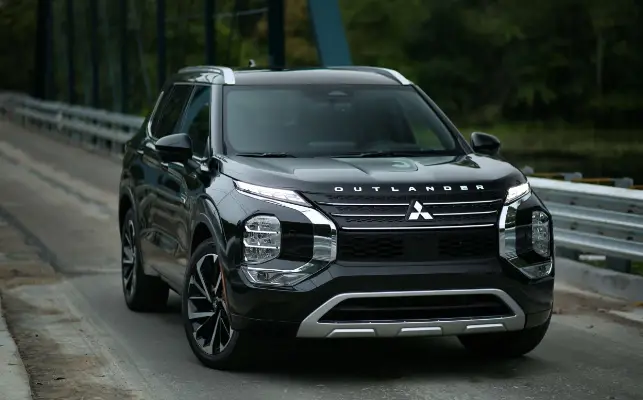
2023 Mitsubishi Outlander PHEV Maintenance Schedule
The 2023 Mitsubishi Outlander PHEV is a state-of-the-art plug-in hybrid electric car that combines performance and environmental friendliness in a way that just works. Its maintenance routine is carefully planned to make sure that this innovative vehicle lasts as long as possible and works perfectly. As an eco-friendly driver, the regular maintenance chores include checking the electric propulsion system, figuring out how healthy the batteries are, and making sure the vehicle’s software is always up to date with the latest technology. The normal parts of maintenance, like changing the oil and rotating the tires, also easily fit into the plan. The meticulously designed maintenance plan shows Mitsubishi’s dedication to dependability and efficiency. This gives owners peace of mind as they drive this forward-thinking and eco-friendly SUV on the roads.
MAINTENANCE REQUIREMENT
Some day-to-day and regular maintenance is essential to maintain your vehicle’s good mechanical condition, as well as its emission and engine performance.
It is the owner’s responsibility to make sure that the scheduled maintenance, as well as general maintenance, is performed.
As the vehicle owner, you are the only one who can ensure that your vehicle receives the proper maintenance care. You are a vital link in the maintenance chain.
GENERAL MAINTENANCE
General maintenance includes those items which should be checked during normal day-to-day operation. They are essential for proper vehicle operation. It is your responsibility to perform these procedures regularly as prescribed.
Performing general maintenance checks requires minimal mechanical skill and only a few general automotive tools.
These checks or inspections can be done by yourself, a qualified technician, or, if you prefer, a certified Mitsubishi EV dealer.
SCHEDULED MAINTENANCE
The maintenance items listed in this section are required to be serviced at regular intervals. However, under severe driving conditions, additional or more frequent maintenance will be required.
WHERE TO GO FOR SERVICE
If maintenance service is required or your vehicle appears to malfunction, have the systems checked and serviced. It is recommended you visit a certified Mitsubishi EV dealer for this service.
Mitsubishi Motors technicians are well-trained specialists and are kept up-to-date with the latest service information through technical bulletins, service tips, and training programs. They are completely qualified to work on Mitsubishi Motors vehicles before work begins.
If your vehicle is involved in a collision, it is recommended that you ask your certified Mitsubishi EV dealer.
You can be confident that a certified Mitsubishi EV dealer’s service department performs the best job to meet the maintenance requirements of your vehicle.
GENERAL MAINTENANCE
During the normal day-to-day operation of the vehicle, general maintenance should be performed regularly as prescribed in this section. If you detect any unusual sounds, vibrations, or smells, be sure to check for the cause or have it checked promptly. In addition, it is recommended that you visit a certified Mitsubishi EV dealer if you think that repairs are required.
When performing any checks or maintenance work, see “Maintenance precautions
EXPLANATION OF GENERAL MAINTENANCE ITEMS
Additional information on the following items with “*” is found in the “8. Do-it-yourself” section of this manual.
Outside the vehicle
The maintenance items listed here should be performed from time to time unless otherwise specified.
Doors and engine hood: Check that all doors and the engine hood operate properly. Also, ensure that all latches lock securely. Lubricate hinges, latches, latch pins, rollers, and links if necessary. Make sure that the secondary latch keeps the hood from opening when the primary latch is released.
When driving in areas using road salt or other corrosive materials, check lubrication frequently.
Lights*: Clean the headlights regularly. Make sure that the headlights, stop lights, tail lights, turn signal lights, and other lights are all operating properly and installed securely. Also, check the headlight aim.
Road wheel nuts (lug nuts)*: When checking the tires, make sure no wheel nuts are missing, and check for any loose wheel nuts. Tighten if necessary.
Tire rotation*: Tires should be rotated every 7,500 miles (12,000 km).
Tires*: Check the pressure with a gauge often and always before long-distance trips. If necessary, adjust the pressure in all tires to the pressure specified. Check carefully for damage, cuts, or excessive wear.
Tire Pressure Monitoring System [TPMS] transmitter components: Replace the TPMS transmitter valve when the tires are replaced due to wear or age.
Wheel alignment and balance: If the vehicle should pull to either side while driving on a straight and level road, or if you detect uneven or abnormal tire wear, there may be a need for wheel alignment.
If the steering wheel or seat vibrates at normal highway speeds, wheel balancing may be needed. Windshield: Clean the windshield regularly. Check the windshield at least every six months for cracks or other damage. Have a damaged windshield replaced by a qualified repair facility.
It is recommended that you have a damaged windshield replaced by a certified Mitsubishi EV dealer. Windshield wiper blades*: Check for cracks or wear if they do not wipe properly.
Inside the vehicle
The maintenance items listed here should be checked regularly, such as when performing scheduled maintenance, cleaning the vehicle, etc.
Accelerator pedal: Check the pedal for smooth operation and make sure the pedal does not catch or require uneven effort. Keep the floor mat away from the pedal.
Brake pedal: Check the pedal for smooth operation. If the brake pedal suddenly goes down further than normal, the pedal feels spongy or the vehicle seems to take longer to stop, have your vehicle checked immediately. It is recommended you visit a certified Mitsubishi EV dealer for this service. Keep the floor mat away from the pedal.
Brakes: Check that the brakes do not pull the vehicle to one side when applied.
Parking brake: Check the parking brake operation regularly. The vehicle should be securely held on a fairly steep hill with only the parking brake applied. If the parking brake needs adjusted, it is recommended you visit a certified Mitsubishi EV dealer for this service.
Seat belts: Check that all parts of the seat belt system (for example, buckles, anchors, adjusters, and retractors) operate properly and smoothly, and are installed securely. Check the belt webbing for cuts, fraying, wear, or damage.
Seats: Check seat position controls such as seat adjusters, seatback recliners, etc. to ensure they operate smoothly and that all latches lock securely in every position. Check that the head restraints move up and down smoothly and that the locks (if so equipped) hold securely in all latched positions.
Steering wheel: Check for changes in the steering conditions, such as excessive free play, hard steering, or strange noises.
Warning lights and chimes: Make sure that all warning lights and chimes are operating properly.
Windshield defroster: Check that the air comes out of the defroster outlets properly and in sufficient quantity when operating the heater or air conditioner.
Windshield wiper and washer*: Check that the wipers and washers operate properly and that the wipers do not streak.
Under the hood and vehicle
The maintenance items listed here should be checked periodically (for example, each time you check the engine oil or refuel).
Auxiliary battery*:
NOTE:
Care should be taken to avoid situations that can lead to potential battery discharge and potential no-start conditions such as:
- Installation or extended use of electronic accessories that consume battery power when the Plug-in Hybrid EV system is not running (Phone chargers, GPS, DVD players, etc.)
- The vehicle is not driven regularly and/or only driven short distances.
In these cases, the battery may need to be charged to maintain battery health.
Brake and clutch fluid level*: Make sure that the brake and clutch fluid level is between the MAX and MIN lines on the reservoir.
Engine and Plug-in Hybrid EV system coolant level*: Check the coolant level when the engine is cold after parking the vehicle on a level surface.
Engine drive belt*: Make sure that the drive belt is not frayed, worn, cracked, or oily.
Engine oil level*: Check the level after parking the vehicle on a level surface and turning off the Plug-in Hybrid EV system. Wait more than 10 minutes for the oil to drain back into the oil pan.
Exhaust system: Make sure there are no loose supports, cracks, or holes. If the sound of the exhaust seems unusual or there is a smell of exhaust fumes, immediately have the exhaust system inspected. It is recommended you visit a certified Mitsubishi EV dealer for this service. (See “Precautions when starting and driving” (P.7-5) for exhaust gas (carbon monoxide).)
Fluid leaks: Check under the vehicle for fuel, oil, water, or other fluid leaks after the vehicle has been parked for a while. Water dripping from the air conditioner after use is normal. If you should notice any leaks or if gasoline fumes are evident, check for the cause and have it corrected immediately.
Radiator and hoses: Check the front of the radiator and clean off any dirt, insects, leaves, etc., that may have accumulated. Make sure the hoses have no cracks, deformation, rot, or loose connections.
Underbody: The underbody is frequently exposed to corrosive substances such as those used on icy roads or to control dust. It is very important to remove these substances, rust will form on the floor pan, frame, fuel lines, and around the exhaust system. At the end of winter, the underbody should be thoroughly flushed with plain water, being careful to clean those areas where mud and dirt may accumulate. For additional information, see “Cleaning exterior
Windshield washer fluid*: Check that there is adequate fluid in the reservoir.
FAQs
Mitsubishi recommends changing the oil in the Outlander PHEV every 12 months or 12,000 miles, whichever comes first.
The cabin air filter should be replaced approximately every 15,000 miles or as needed based on driving conditions.
Mitsubishi recommends regular maintenance of the hybrid system every 30,000 miles, including inspection of components and fluid checks.
Brake fluid replacement is recommended every 30,000 miles or every three years, whichever comes first.
Tire rotations are recommended every 7,500 to 10,000 miles to ensure even tire wear.
The engine air filter should be inspected at every regular service interval, typically around 15,000 to 30,000 miles.
Mitsubishi recommends checking the transmission fluid every 30,000 miles and replacing it if necessary.
Spark plug replacement is typically recommended every 60,000 miles.
The drive belt should be inspected at every regular service interval and replaced if signs of wear or damage are present.
Mitsubishi recommends checking the high-voltage battery system every 15,000 miles.
Coolant replacement is typically recommended every 60,000 miles.
Suspension components should be inspected at regular service intervals, generally every 15,000 to 30,000 miles.
Regular inspection of the electric motor and related components is advised every 30,000 miles.
Regularly check and top off the power steering fluid at each oil change interval or as needed.
Mitsubishi recommends inspecting the fuel system at every 30,000-mile service interval.
Useful Link
View Full PDF: 2023 Mitsubishi Outlander PHEV Owners Manual | Auto User Guide
2023 Mitsubishi Outlander PHEV Fuses and Fuse Box Instructions

